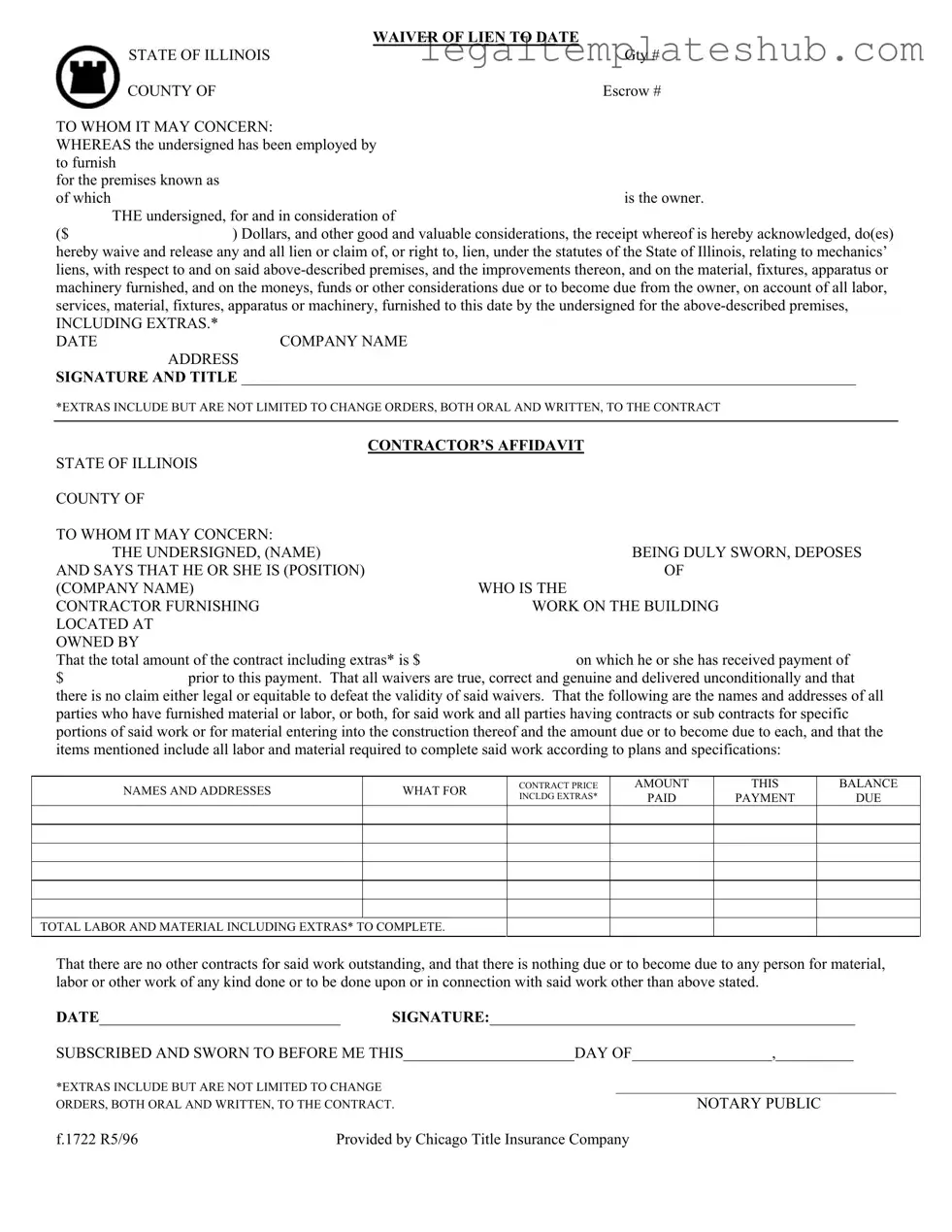Blank Chicago Title Waiver Format PDF Form
The Chicago Title Waiver Format form is a legal document used in Illinois that allows contractors and subcontractors to waive their right to file a lien against a property for unpaid work. This form ensures that the owner of the property is protected from potential claims while providing a clear record of payments made for services rendered. If you need to fill out this form, click the button below to get started.
Access Editor
